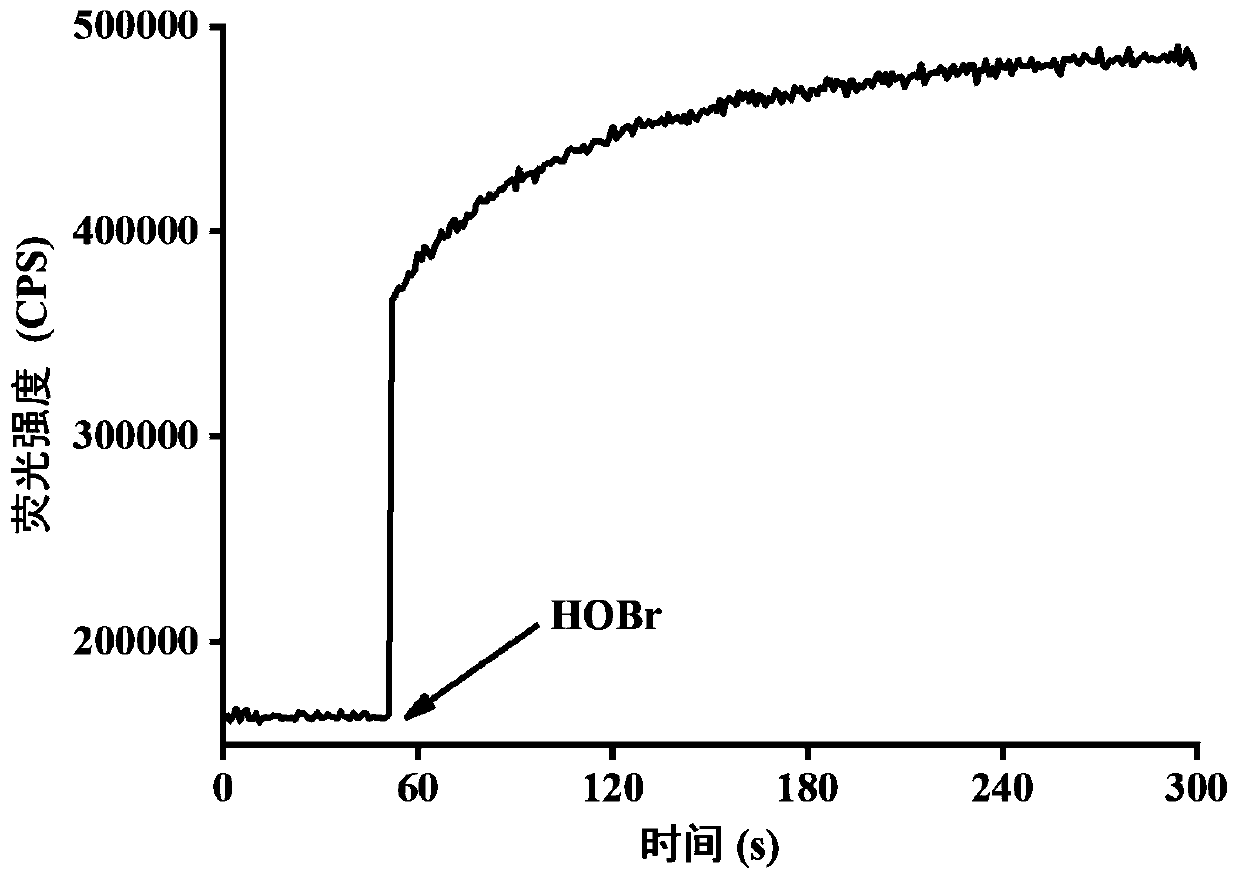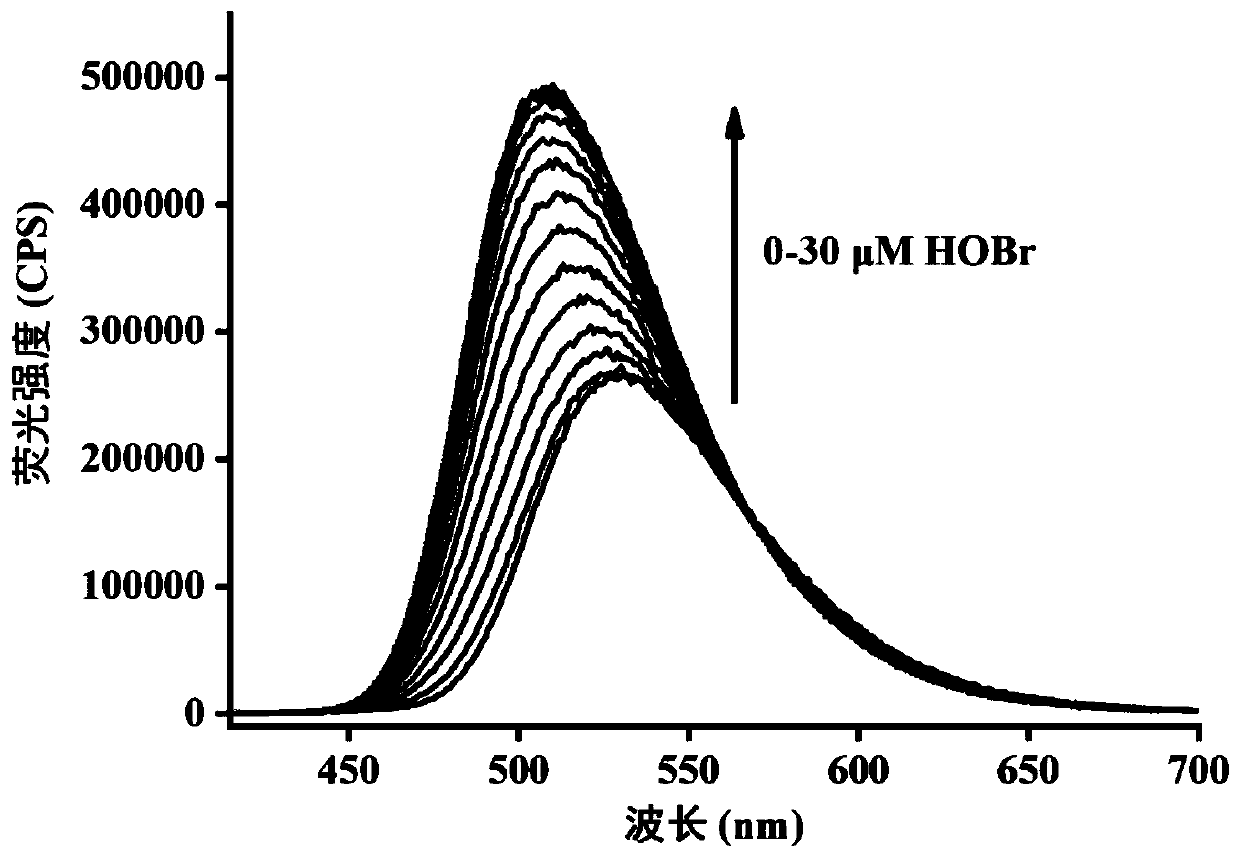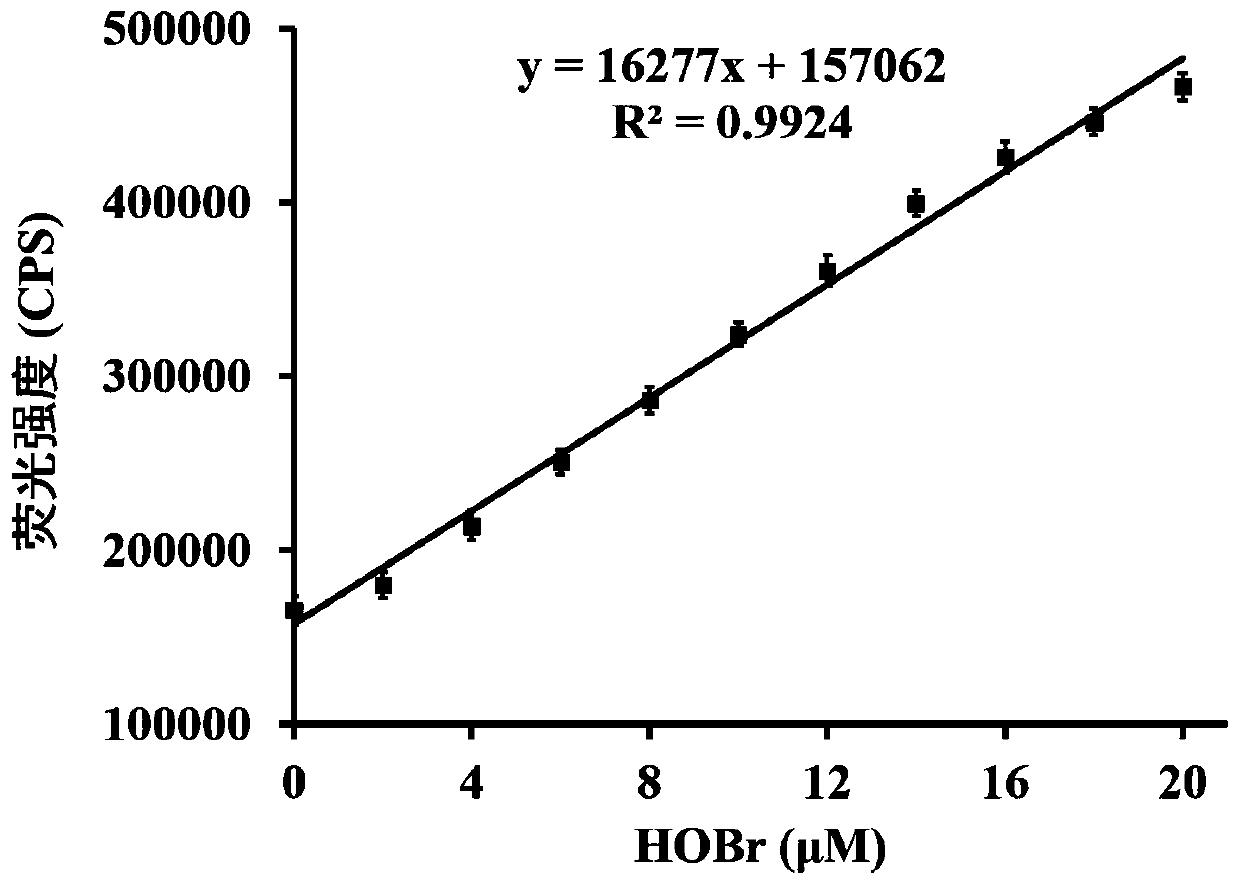Rapid high-selectivity hypobromous acid fluorescence probe, and preparation method and application thereof
A fluorescent probe and sulfonic acid group technology, applied in the field of fluorescent probes, can solve the problems of lack of fluorescent probes, low concentration, short oxidation reaction time, etc., and achieve the effects of strong anti-interference ability, good stability and sensitive response.
- Summary
- Abstract
- Description
- Claims
- Application Information
AI Technical Summary
Problems solved by technology
Method used
Image
Examples
Embodiment 1
[0047] Embodiment 1: the synthesis of formula (II) compound
[0048] The synthetic design route is as follows:
[0049]
Embodiment approach 1
[0050] Embodiment 1: Dissolve 431.5mg (1.5mmol) of N-butyl-4-chloro-1,8-naphthalimide in 8mL of ethylene glycol methyl ether, and then add 301.5mg (1.5mmol) of 1-(2 -aminoethyl)piperidine dihydrochloride, then N,N-diisopropylethylamine was added to reflux for 10h, and then rotary evaporation was carried out by a rotary evaporator to obtain a crude product. If want to obtain purer product, can carry out chromatographic column separation to obtain pure product, obtain pure product 284mg, productive rate is 50%.
Embodiment approach 2
[0051] Embodiment 2: Dissolve 431.5mg (1.5mmol) of N-butyl-4-chloro-1,8-naphthalimide in 8mL of ethylene glycol methyl ether, and then add 603mg (3mmol) of 1-(2-ammonia Ethyl) piperidine dihydrochloride, then reflux for 10h, and then use a rotary evaporator to carry out rotary evaporation to obtain a crude product. If want to obtain purer product, can carry out chromatographic column separation to obtain pure product, obtain pure product 370mg, productive rate is 65%.
PUM
 Login to View More
Login to View More Abstract
Description
Claims
Application Information
 Login to View More
Login to View More - R&D
- Intellectual Property
- Life Sciences
- Materials
- Tech Scout
- Unparalleled Data Quality
- Higher Quality Content
- 60% Fewer Hallucinations
Browse by: Latest US Patents, China's latest patents, Technical Efficacy Thesaurus, Application Domain, Technology Topic, Popular Technical Reports.
© 2025 PatSnap. All rights reserved.Legal|Privacy policy|Modern Slavery Act Transparency Statement|Sitemap|About US| Contact US: help@patsnap.com



